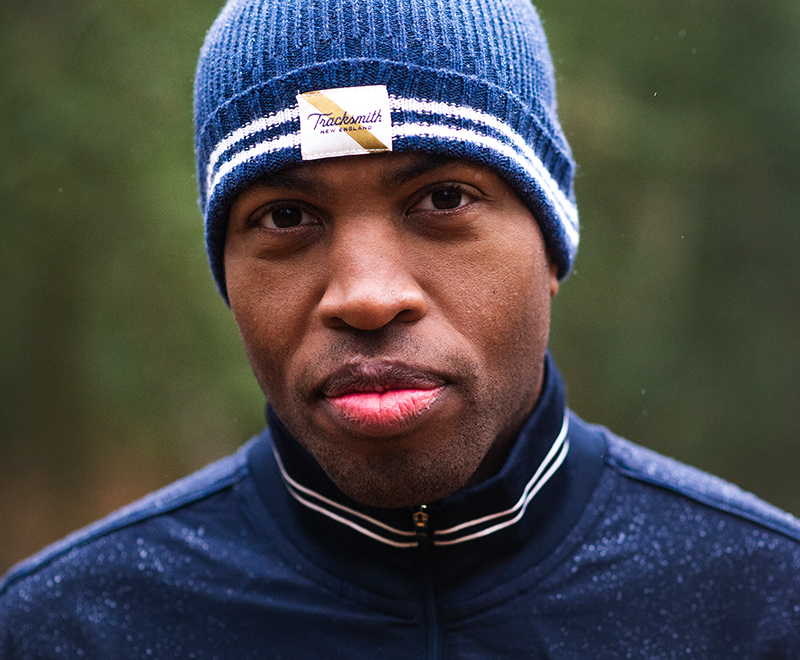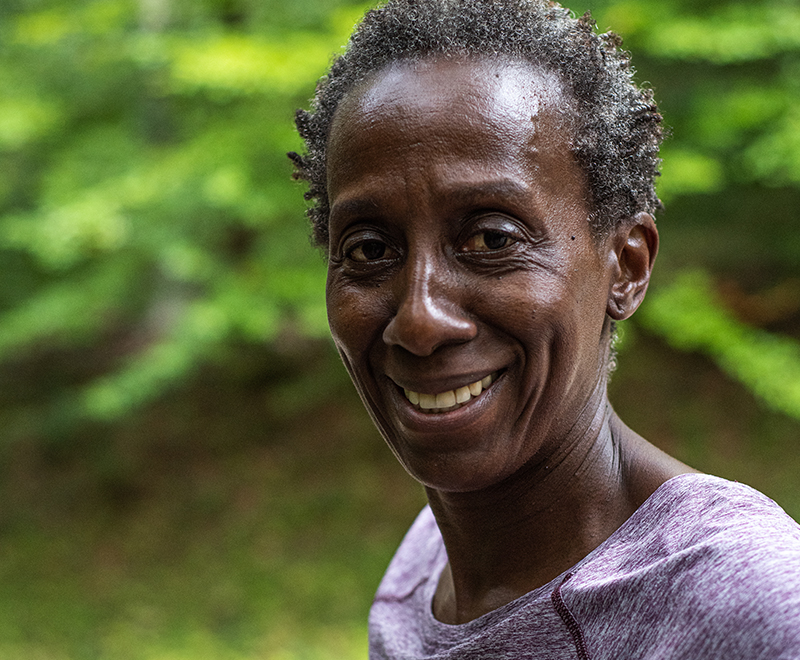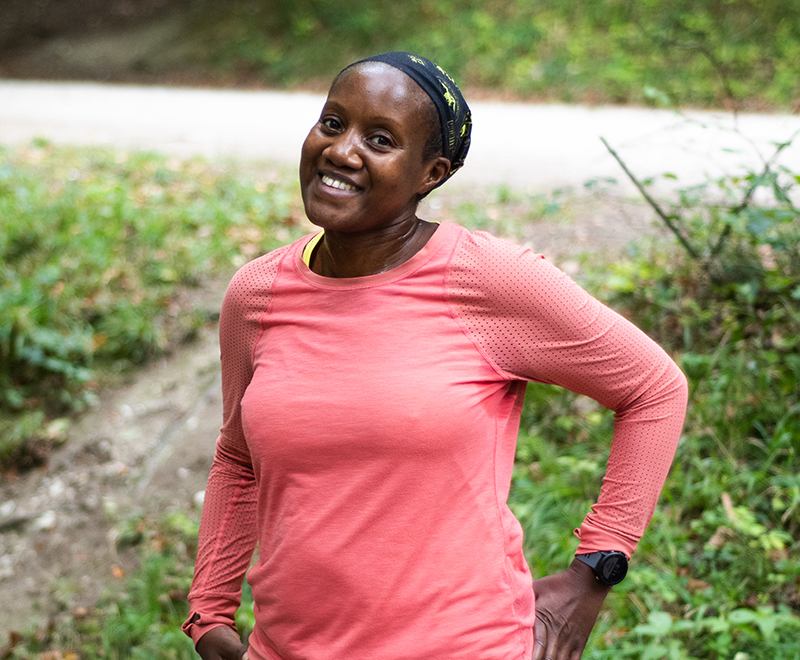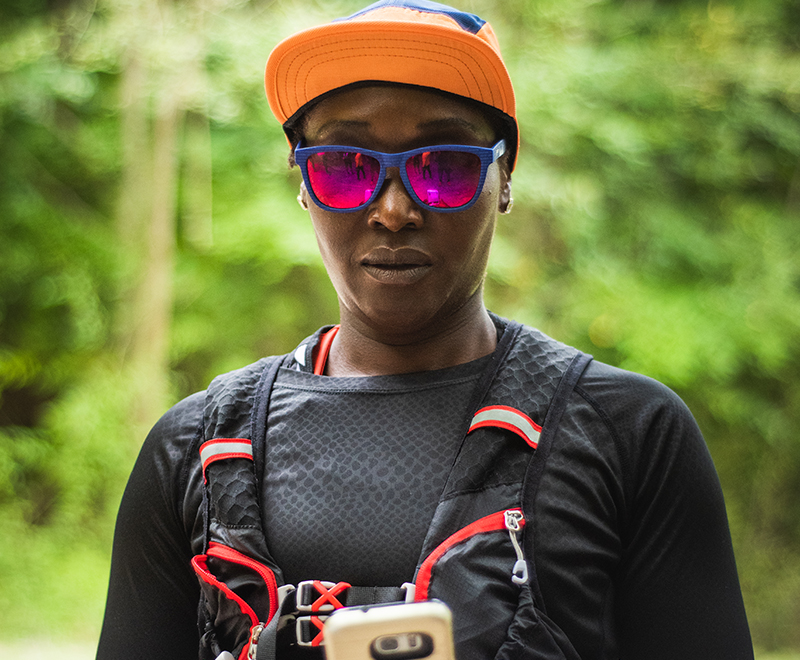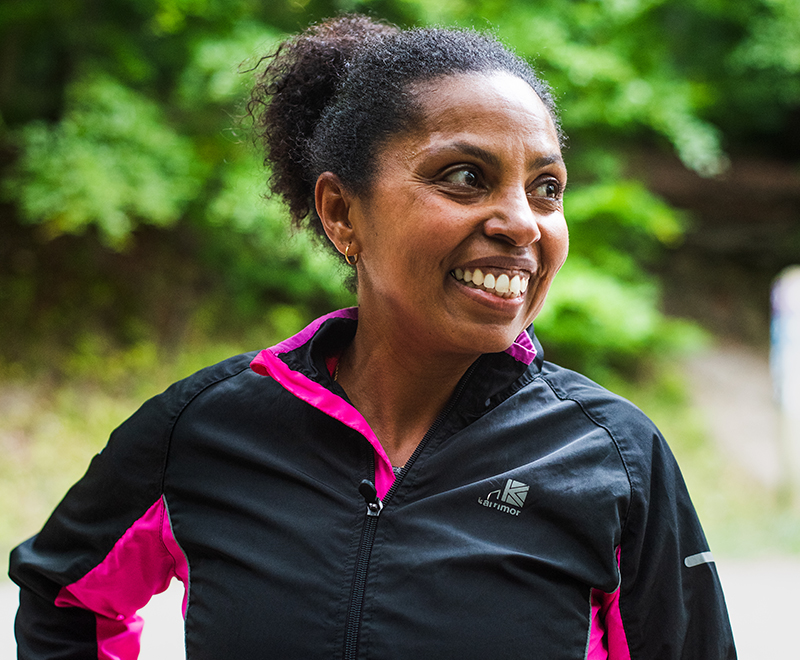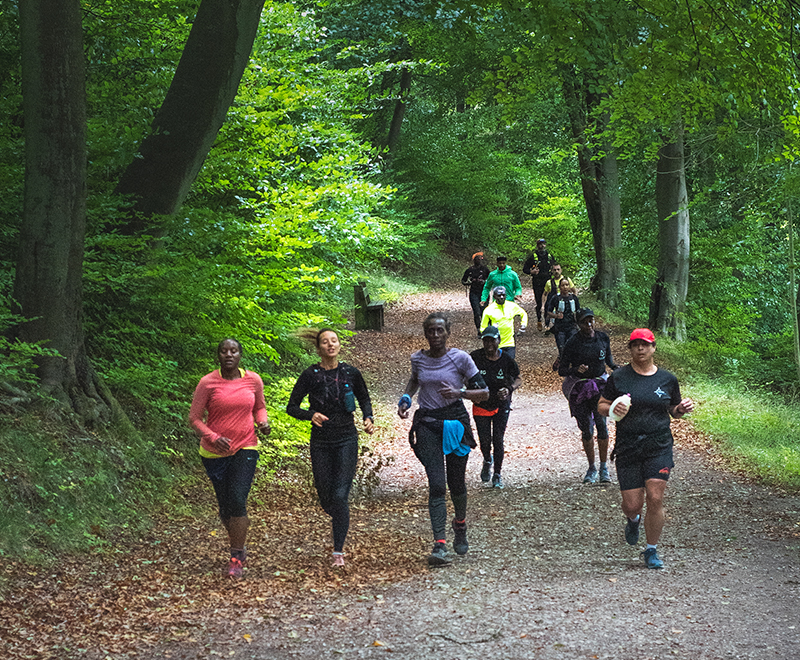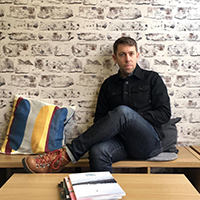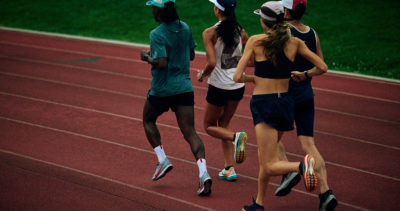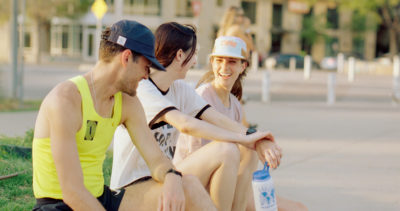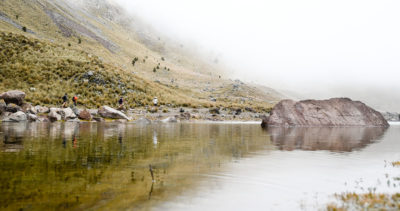“The knock-on impact is that young Black children will grow up looking at images in magazines and thinking that it’s a space that’s not for them” – Marcus Brown
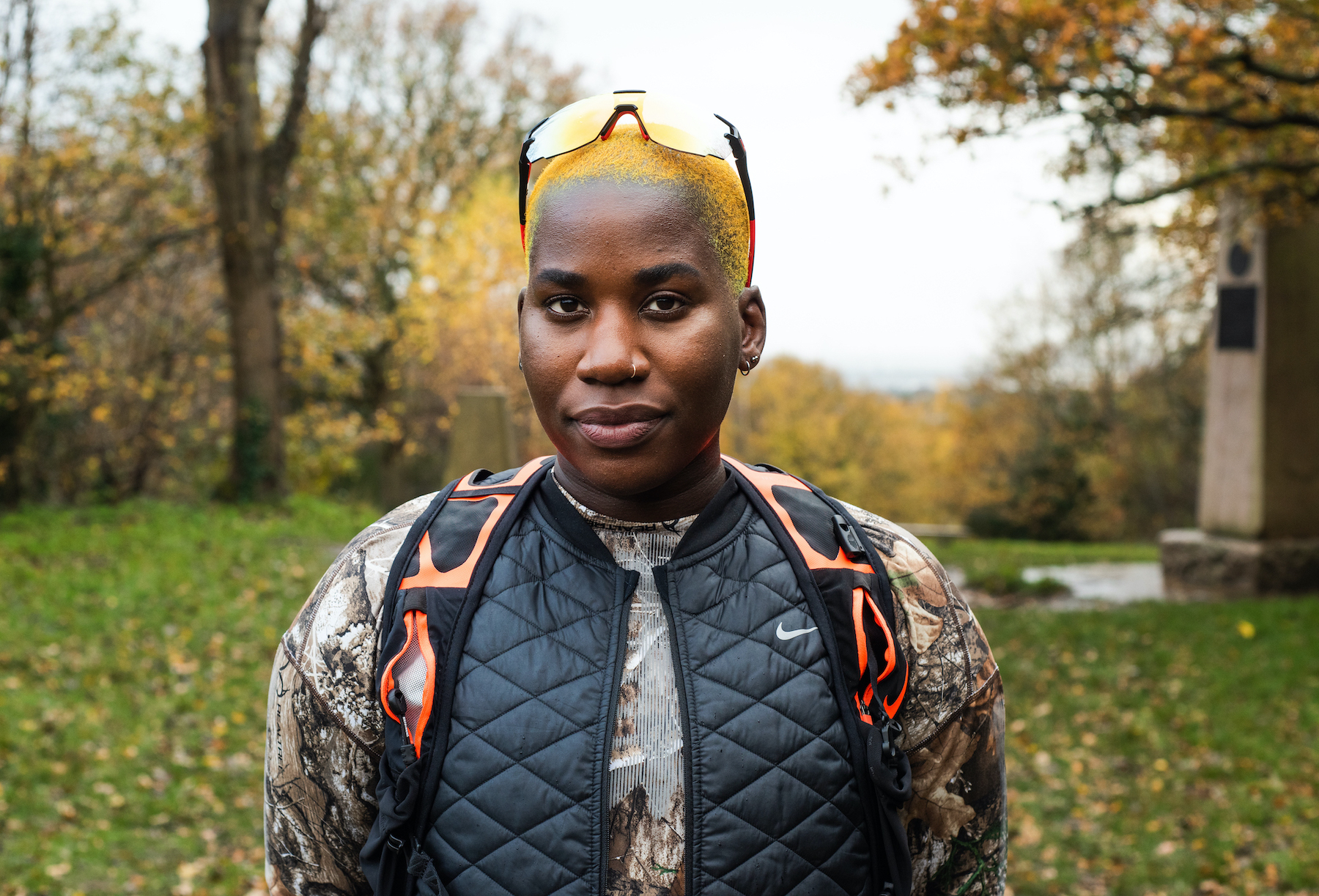
like the wind feature | black trail runners
like the wind feature | black trail runners

words x
simon freeman
photos x
mike fordham, phil young
It is a romantic – and completely false – notion that running is an activity and sport open to everyone.
Of course, running doesn’t have many barriers to entry. You don’t need a team or equipment. You don’t need a court or a pitch. You can go running any time, day or night.
But that ignores the reality that not everyone has equal access to running. In particular the colour of your skin and your gender both dictate whether or not you are free to run wherever and whenever you want.
One part of this inequality is the way that BIPOC people engage in trail running. It is almost as though this is a microcosm of the broader issue of racism: barriers erected and enforced based purely on skin colour.
To illustrate what this looks like, let’s take an imperfect example: access to areas designated as some of the most beautiful outdoor spaces the United Kingdom has to offer. There are 15 National Parks in the UK, representing almost 10% of the total landmass. An estimated 110 million people visit the National Parks of England and Wales each year.
Of the millions of visitors, just one percent of visitors are from Black, Asian or minority ethnic (BAME) backgrounds. That is despite 14% of the UK population identifying as having a BAME background, according to the last census. And if only a tiny percentage of National Parks visitors are BAME, what can be said of the rest of the country’s rural trails?
It is against this backdrop that a group was formed that is attempting to break down the barriers for BAME people when it comes to trail running. That group is Black Trail Runners.
Of course, running doesn’t have many barriers to entry. You don’t need a team or equipment. You don’t need a court or a pitch. You can go running any time, day or night.
But that ignores the reality that not everyone has equal access to running. In particular the colour of your skin and your gender both dictate whether or not you are free to run wherever and whenever you want.
One part of this inequality is the way that BIPOC people engage in trail running. It is almost as though this is a microcosm of the broader issue of racism: barriers erected and enforced based purely on skin colour.
To illustrate what this looks like, let’s take an imperfect example: access to areas designated as some of the most beautiful outdoor spaces the United Kingdom has to offer. There are 15 National Parks in the UK, representing almost 10% of the total landmass. An estimated 110 million people visit the National Parks of England and Wales each year.
Of the millions of visitors, just one percent of visitors are from Black, Asian or minority ethnic (BAME) backgrounds. That is despite 14% of the UK population identifying as having a BAME background, according to the last census. And if only a tiny percentage of National Parks visitors are BAME, what can be said of the rest of the country’s rural trails?
It is against this backdrop that a group was formed that is attempting to break down the barriers for BAME people when it comes to trail running. That group is Black Trail Runners.
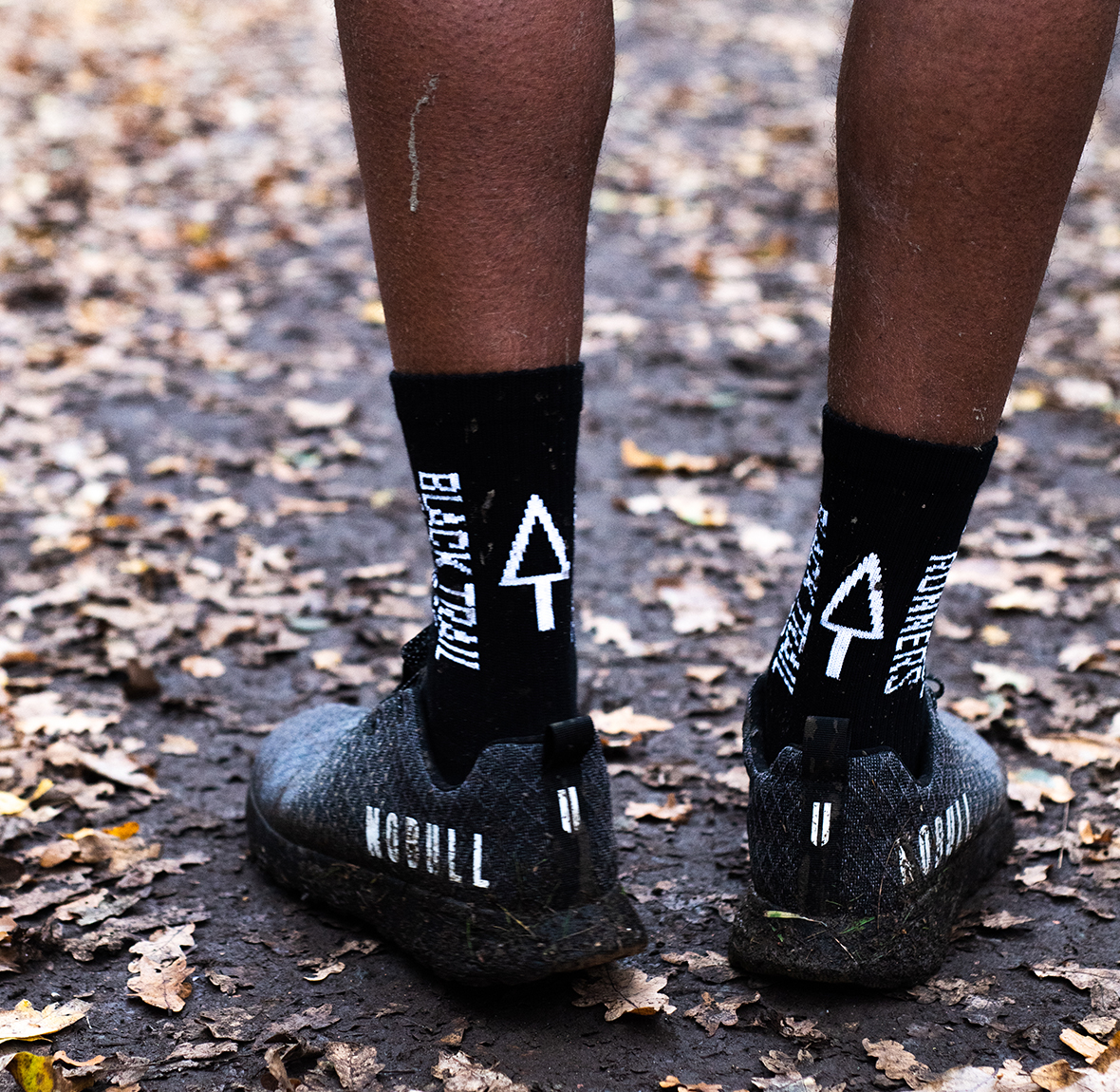
For one of the founding members of Black Trail Runners, Phil Young, the need for an organisation that challenges the notion of who the trails are for is simple:
“Many people of colour have simply lost their emotional connection to the natural world and, by association, the physical, mental and spiritual wellbeing that comes with it,” he says. “For me, BTR is simply a vehicle to be able to bring awareness to some of the joys found around belonging and just being in the outdoors, something which is often missing in the Black and Brown community.”
According to the Centre for Research on Environment, Society and Health, a virtual centre from the Universities of Edinburgh and Glasgow, being in green spaces can help people suffering from stress and mental illness, assist in the reduction of high blood pressure, and even aid post-surgery recovery. So surely just on this basis alone, everything should be done to support and encourage BAME people to get active in the wild.
Marcus Brown, another founding member of Black Trail Runners, decided that he had to do what he could to encourage people who did not feel that the countryside was for them to explore spaces that they have every right to be in.
“From our various conversations with the Black running community, it was seen that Black people don’t feel comfortable in outdoor spaces,” he explains. “So how can I use my voice to help amplify this and change the narrative? Whatever distance or surface you run, I want to advocate that being outside and enjoying that space is a right for all.”
There is an ancient Chinese proverb that says: “The best time to plant a tree was 20 years ago. The second best time is now.” Racism is a battle that has been fought for generations but the past 12 months feel like new energy has been put into the fight. For Marcus, Phil and the others who came together to create Black Trail Runners, there were several reasons 2020 was the ideal year to start the group.
“The catalyst to create Black Trail Runners, I think for the majority of the members, were the events of last summer: George Floyd and the rise of Black Lives Matter,” says Phil. “Like many people, both Black and white, the killing of Floyd was the final straw. Covid helped sharpen thinking and led to some global soul-searching. For the Black community it acted almost as a rallying cry, those final dying breaths a plea to mobilise and push on. We have rarely been given the opportunity or platform to excel and so,
“Many people of colour have simply lost their emotional connection to the natural world and, by association, the physical, mental and spiritual wellbeing that comes with it,” he says. “For me, BTR is simply a vehicle to be able to bring awareness to some of the joys found around belonging and just being in the outdoors, something which is often missing in the Black and Brown community.”
According to the Centre for Research on Environment, Society and Health, a virtual centre from the Universities of Edinburgh and Glasgow, being in green spaces can help people suffering from stress and mental illness, assist in the reduction of high blood pressure, and even aid post-surgery recovery. So surely just on this basis alone, everything should be done to support and encourage BAME people to get active in the wild.
Marcus Brown, another founding member of Black Trail Runners, decided that he had to do what he could to encourage people who did not feel that the countryside was for them to explore spaces that they have every right to be in.
“From our various conversations with the Black running community, it was seen that Black people don’t feel comfortable in outdoor spaces,” he explains. “So how can I use my voice to help amplify this and change the narrative? Whatever distance or surface you run, I want to advocate that being outside and enjoying that space is a right for all.”
There is an ancient Chinese proverb that says: “The best time to plant a tree was 20 years ago. The second best time is now.” Racism is a battle that has been fought for generations but the past 12 months feel like new energy has been put into the fight. For Marcus, Phil and the others who came together to create Black Trail Runners, there were several reasons 2020 was the ideal year to start the group.
“The catalyst to create Black Trail Runners, I think for the majority of the members, were the events of last summer: George Floyd and the rise of Black Lives Matter,” says Phil. “Like many people, both Black and white, the killing of Floyd was the final straw. Covid helped sharpen thinking and led to some global soul-searching. For the Black community it acted almost as a rallying cry, those final dying breaths a plea to mobilise and push on. We have rarely been given the opportunity or platform to excel and so,
across the world, communities have decided it’s time to create movements on our own terms.”
When it comes to what Phil, Marcus and the other members of Black Trail Runners are trying to achieve, the answer is both simple and incredibly complex.
“My long-term view is that I want everybody to feel that the outdoor space belongs to them,” says Marcus, “and we can get to the point where we don’t need the group any more and it’s just a regular thing. Where it’s not assumed that the space doesn’t belong to people based on colour.
“And people get confused by this. They think it’s about access, that it is about being able to go to races or travel wherever – which you can do. ‘Yes’, there’s no government system stopping you doing this. But some people don’t feel comfortable in doing that because they’re not seeing people that look like them in those spaces so they stay where they are.
“I’d challenge you to look at skiing, for example. How many Black people do you see skiing or advertised in that space? How many Black people do you see in outdoor pursuits, from climbing to camping, for example? The knock-on impact is that young Black children will grow up looking at images in magazines and thinking that it’s a space that’s not for them. It’s something that if you’re not Black is hard to understand. Because if you are white you grow up seeing white people doing the majority of these things, so it’s a bit easier for you to see yourself doing those things, because you have a frame of reference.”
He’s right; that is my experience. Wherever I see trail running, I see me: white, male, wealthy. So it makes complete sense that the trails are for me. It is hard, although not impossible, for me to imagine a scenario where I would stand out or not feel welcome. But imagine is what I have to do when it comes to running (or doing any other activity) in the great outdoors.
At the same time, it seems so utterly preposterous to me that the trails are “for” anyone. Certainly based on the colour of their skin. Barrelling along a mountainside or racing through a forest, jumping roots and ducking branches, should absolutely be for everyone.
The big question, then, is what can we do about it?
For the founders of Black Trail Runners, they are leading by example. Phil says that he has an ”on-off relationship with running” mainly because his knees, battered by years of other sports, limit the amount of running he can do. Marcus is mainly focused on road running, chasing faster marathon times. But both Marcus and Phil love the trails and regularly get out on them – leading by example.
The Black Trail Runners are also trying to engage gatekeepers to trail running in order to affect change.
“We are working with brands, races, media, events and organisations to give insight into our lived experiences,” explains Phil, “with a view to help them bring more diversity and inclusion to the trail and the machine behind it.”
But the truth is that there is a huge weight of history behind the way BAME people in the UK and BIPOC people in the US – as well as minority communities around the world – feel about the outdoors.
“The lack of diversity in trail is a reflection of our society and a result of how people of colour are represented and have been afterthoughts throughout British history,” says Phil. “There are systemic injustices that we as a nation have to confront. We are doing our bit in this tiny corner of sport, but until the wider problem is addressed I feel that it will be a battle hard won.”
I believe that we – that is, runners everywhere – have to fight against racism on at least two levels. There are small, local, immediate actions that we must engage in. Black Trail Runners is one example of how runners are doing that. And then there are deeply ingrained racist attitudes that permeate every aspect of our lives that must be acknowledged, unravelled and ultimately defeated. Which is going to be difficult work that is resisted and challenging. But racism must be defeated. And we are all responsible. So that one day, running on the trails – like every other aspect of life – will be for everyone.
“My long-term view is that I want everybody to feel that the outdoor space belongs to them,” says Marcus, “and we can get to the point where we don’t need the group any more and it’s just a regular thing. Where it’s not assumed that the space doesn’t belong to people based on colour.
“And people get confused by this. They think it’s about access, that it is about being able to go to races or travel wherever – which you can do. ‘Yes’, there’s no government system stopping you doing this. But some people don’t feel comfortable in doing that because they’re not seeing people that look like them in those spaces so they stay where they are.
“I’d challenge you to look at skiing, for example. How many Black people do you see skiing or advertised in that space? How many Black people do you see in outdoor pursuits, from climbing to camping, for example? The knock-on impact is that young Black children will grow up looking at images in magazines and thinking that it’s a space that’s not for them. It’s something that if you’re not Black is hard to understand. Because if you are white you grow up seeing white people doing the majority of these things, so it’s a bit easier for you to see yourself doing those things, because you have a frame of reference.”
He’s right; that is my experience. Wherever I see trail running, I see me: white, male, wealthy. So it makes complete sense that the trails are for me. It is hard, although not impossible, for me to imagine a scenario where I would stand out or not feel welcome. But imagine is what I have to do when it comes to running (or doing any other activity) in the great outdoors.
At the same time, it seems so utterly preposterous to me that the trails are “for” anyone. Certainly based on the colour of their skin. Barrelling along a mountainside or racing through a forest, jumping roots and ducking branches, should absolutely be for everyone.
The big question, then, is what can we do about it?
For the founders of Black Trail Runners, they are leading by example. Phil says that he has an ”on-off relationship with running” mainly because his knees, battered by years of other sports, limit the amount of running he can do. Marcus is mainly focused on road running, chasing faster marathon times. But both Marcus and Phil love the trails and regularly get out on them – leading by example.
The Black Trail Runners are also trying to engage gatekeepers to trail running in order to affect change.
“We are working with brands, races, media, events and organisations to give insight into our lived experiences,” explains Phil, “with a view to help them bring more diversity and inclusion to the trail and the machine behind it.”
But the truth is that there is a huge weight of history behind the way BAME people in the UK and BIPOC people in the US – as well as minority communities around the world – feel about the outdoors.
“The lack of diversity in trail is a reflection of our society and a result of how people of colour are represented and have been afterthoughts throughout British history,” says Phil. “There are systemic injustices that we as a nation have to confront. We are doing our bit in this tiny corner of sport, but until the wider problem is addressed I feel that it will be a battle hard won.”
I believe that we – that is, runners everywhere – have to fight against racism on at least two levels. There are small, local, immediate actions that we must engage in. Black Trail Runners is one example of how runners are doing that. And then there are deeply ingrained racist attitudes that permeate every aspect of our lives that must be acknowledged, unravelled and ultimately defeated. Which is going to be difficult work that is resisted and challenging. But racism must be defeated. And we are all responsible. So that one day, running on the trails – like every other aspect of life – will be for everyone.
more articles


